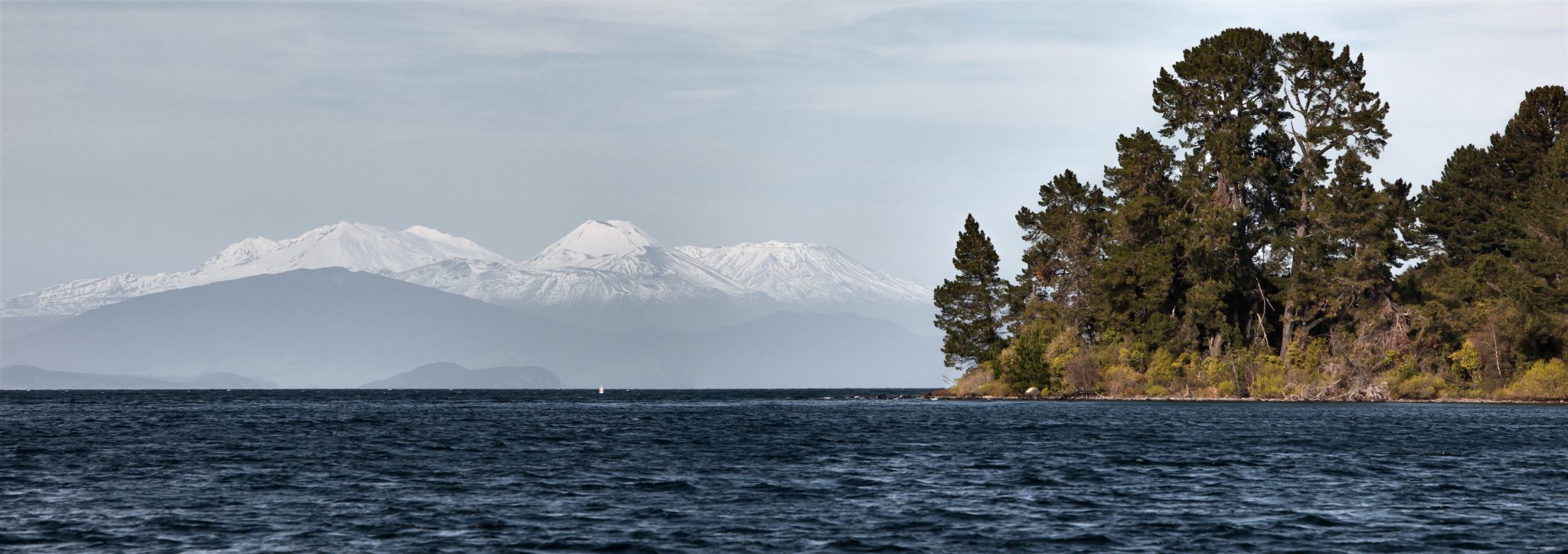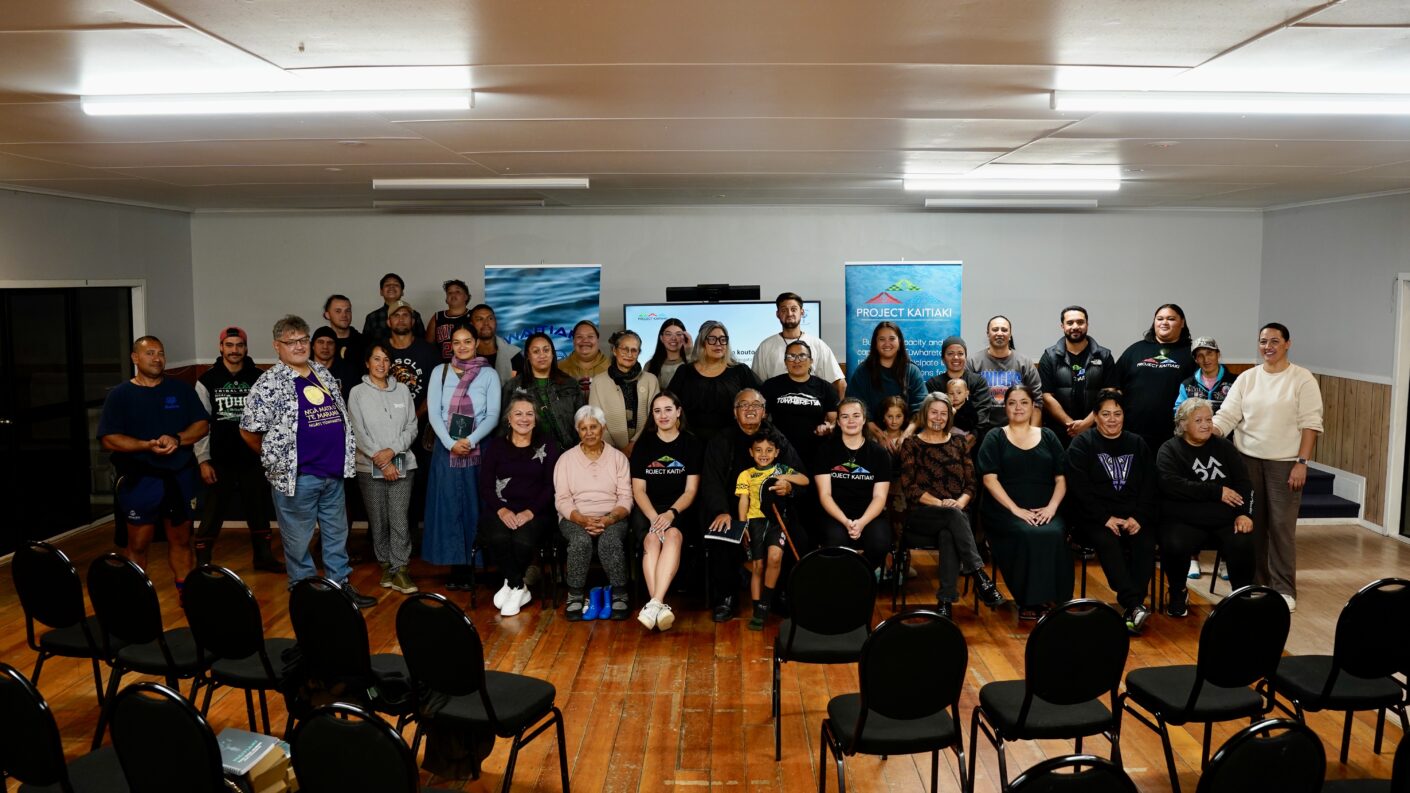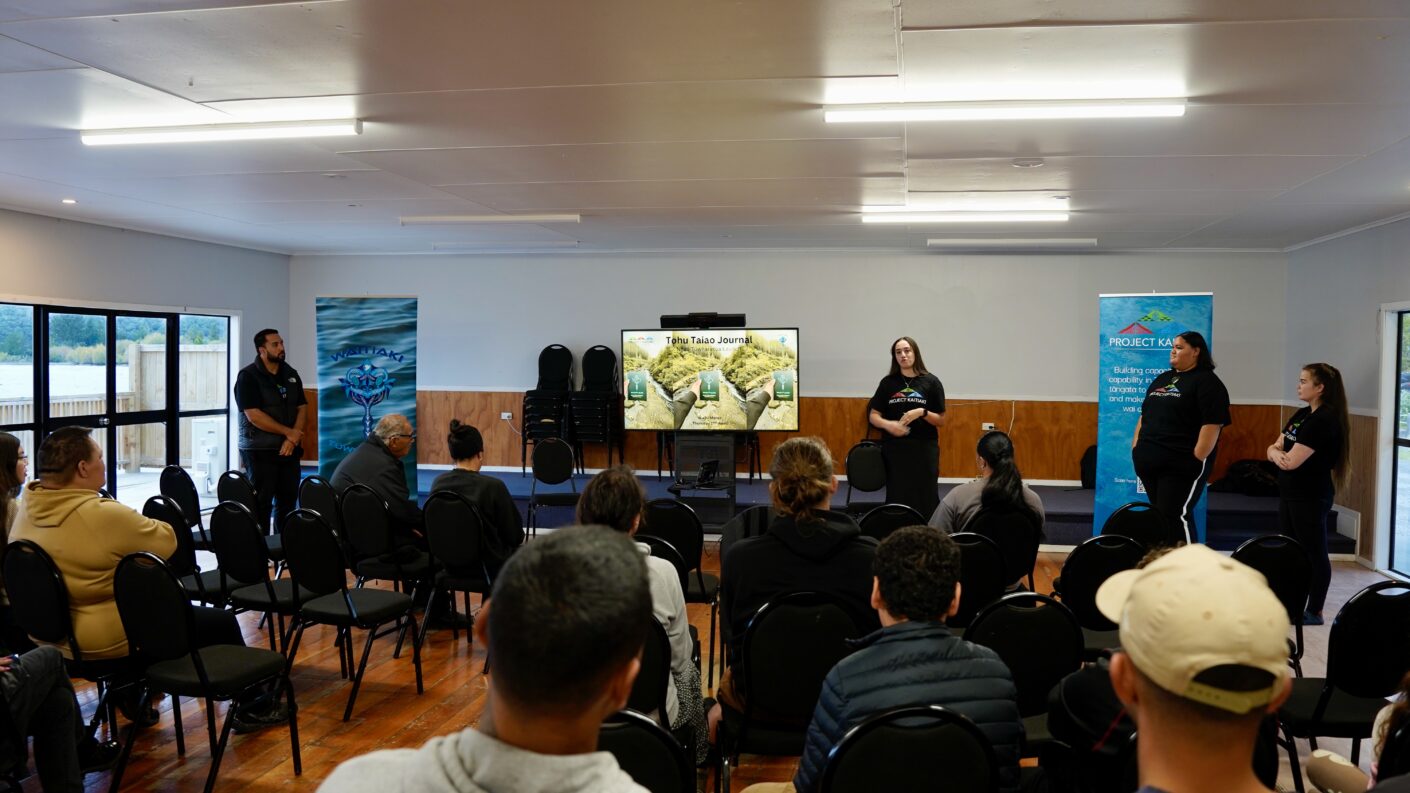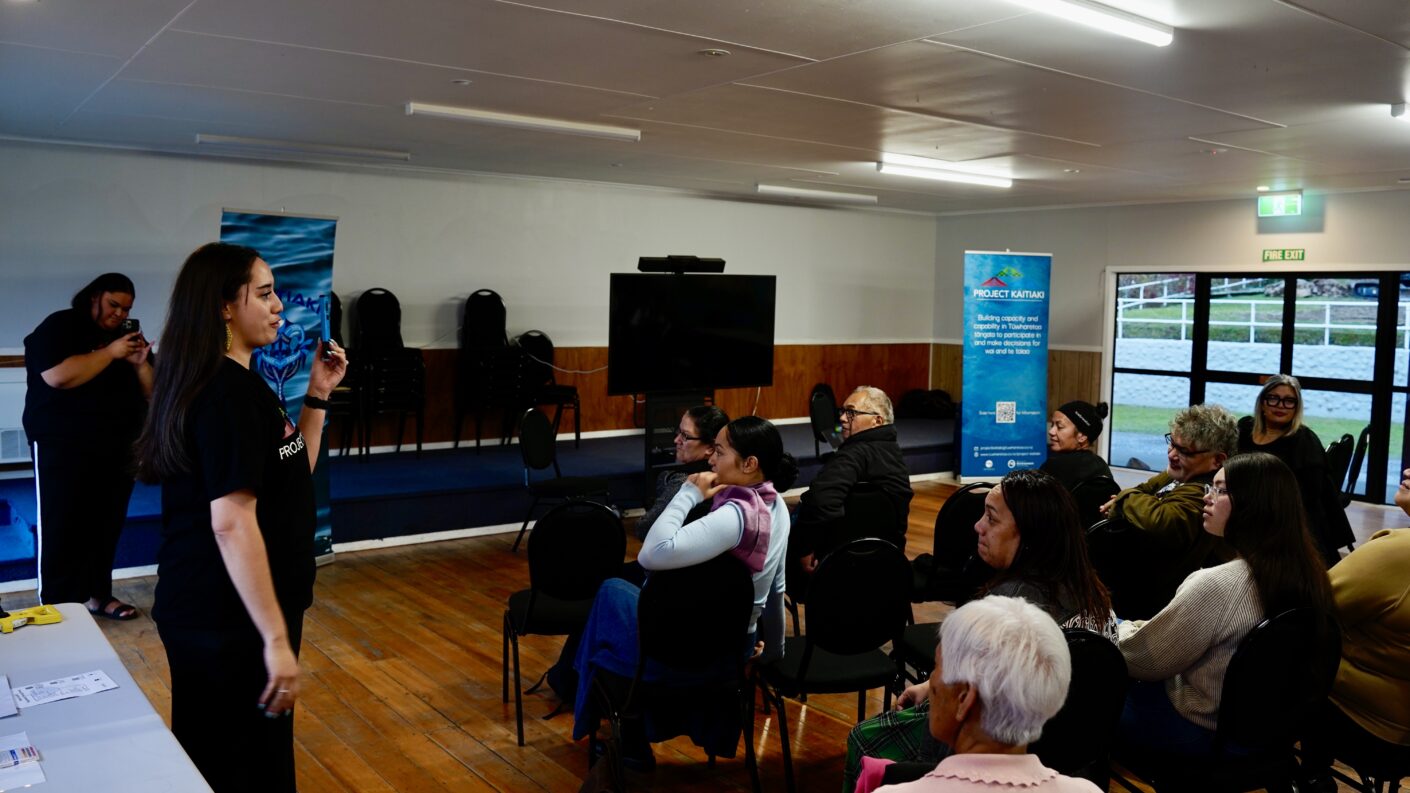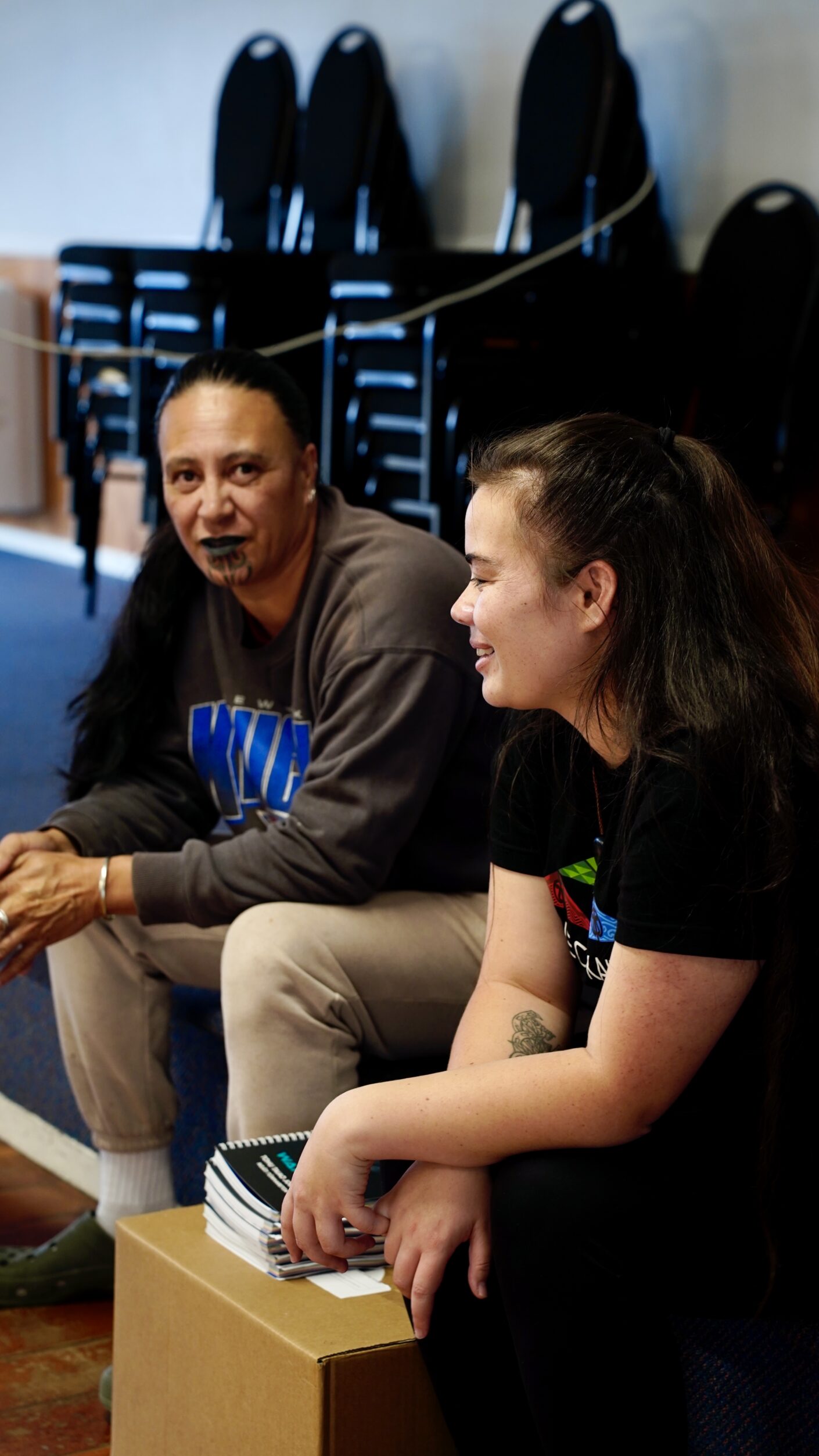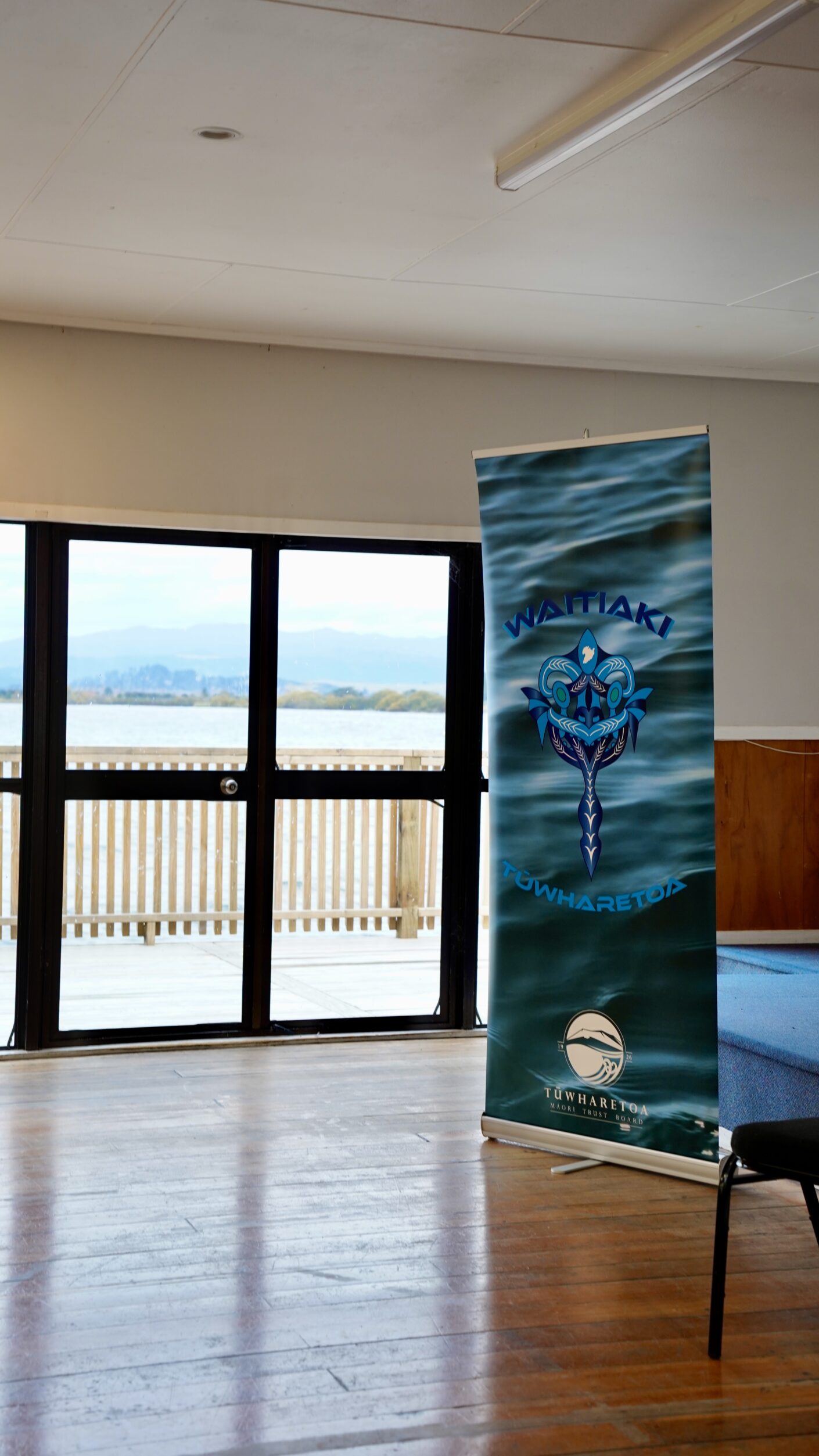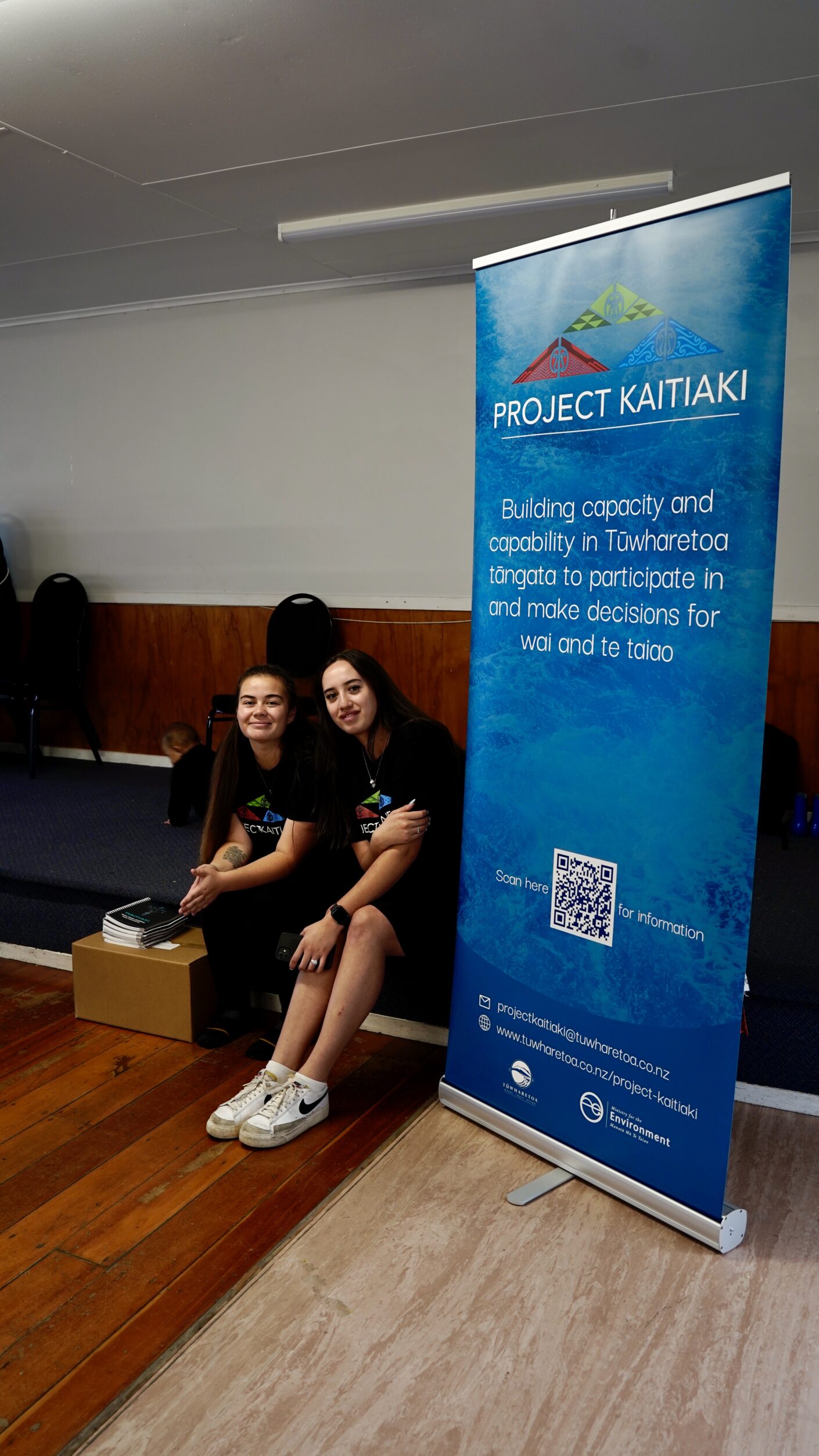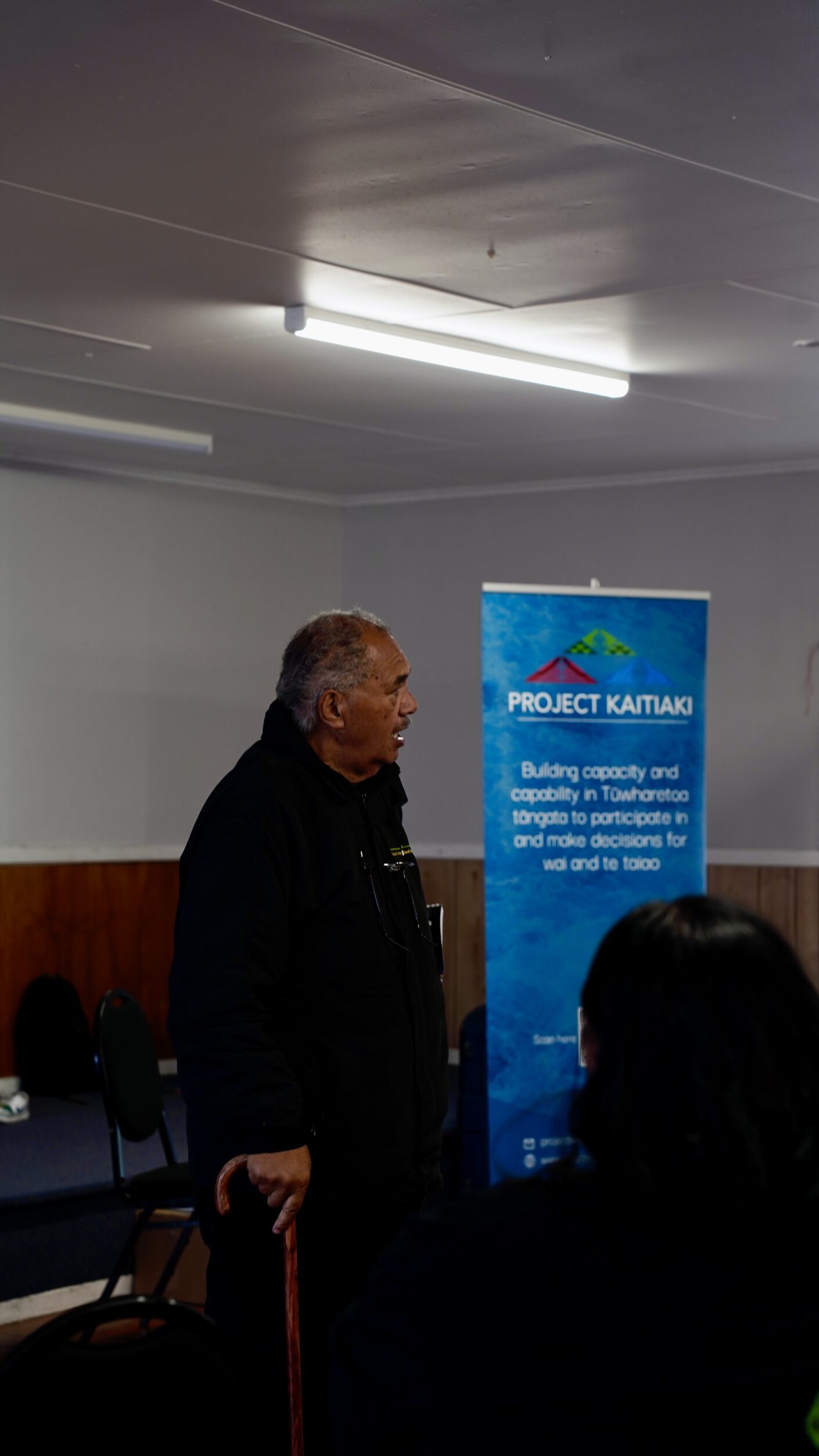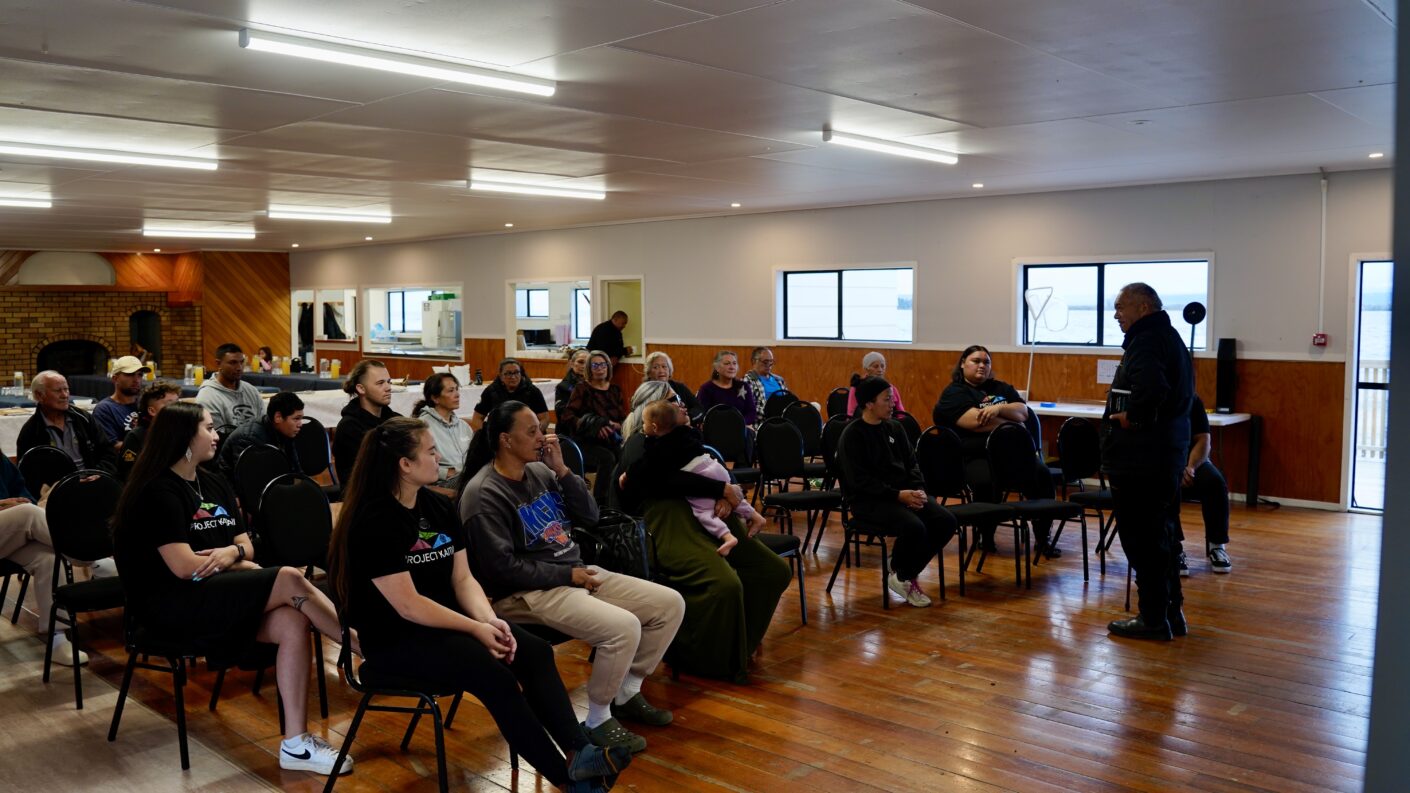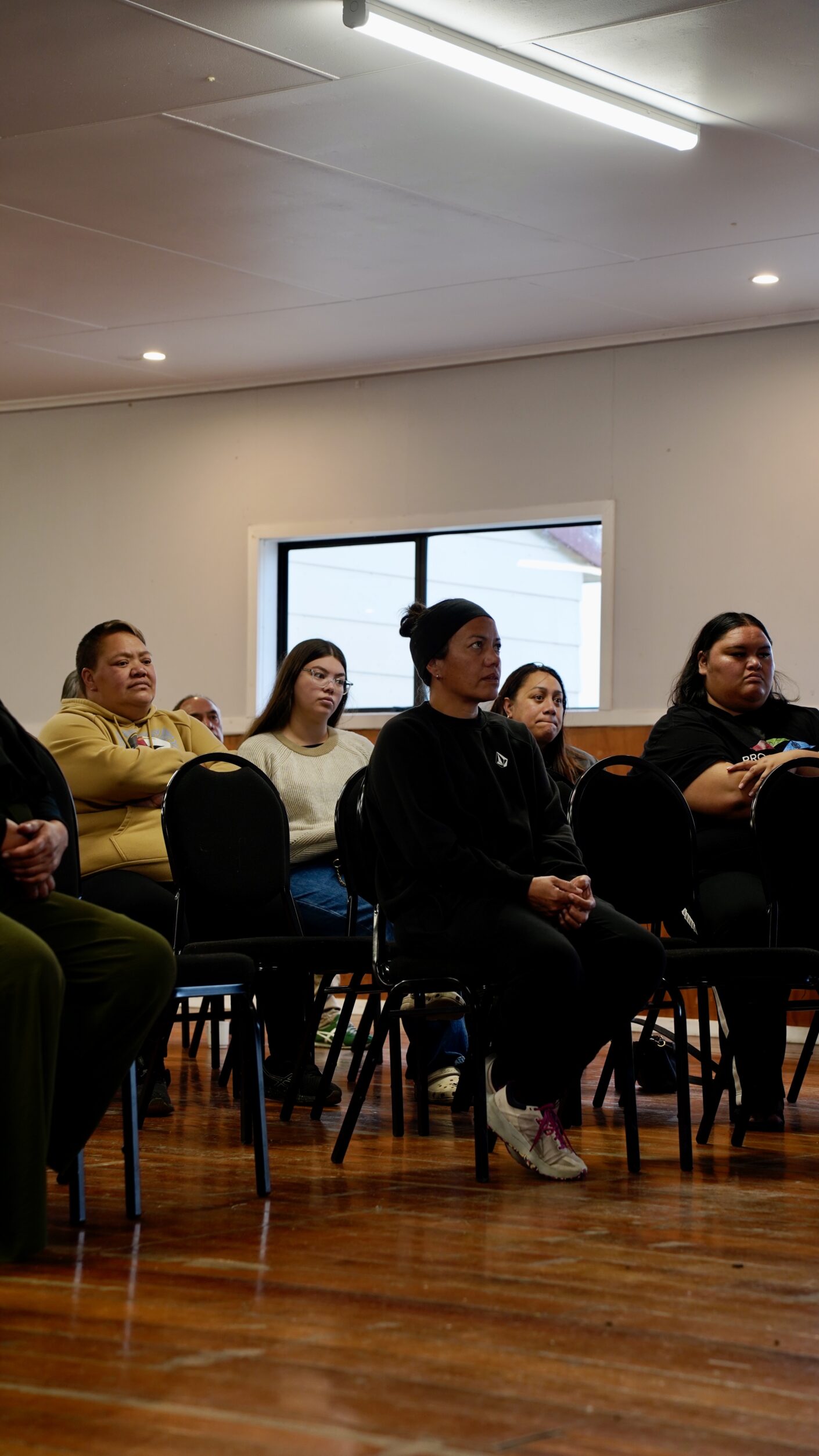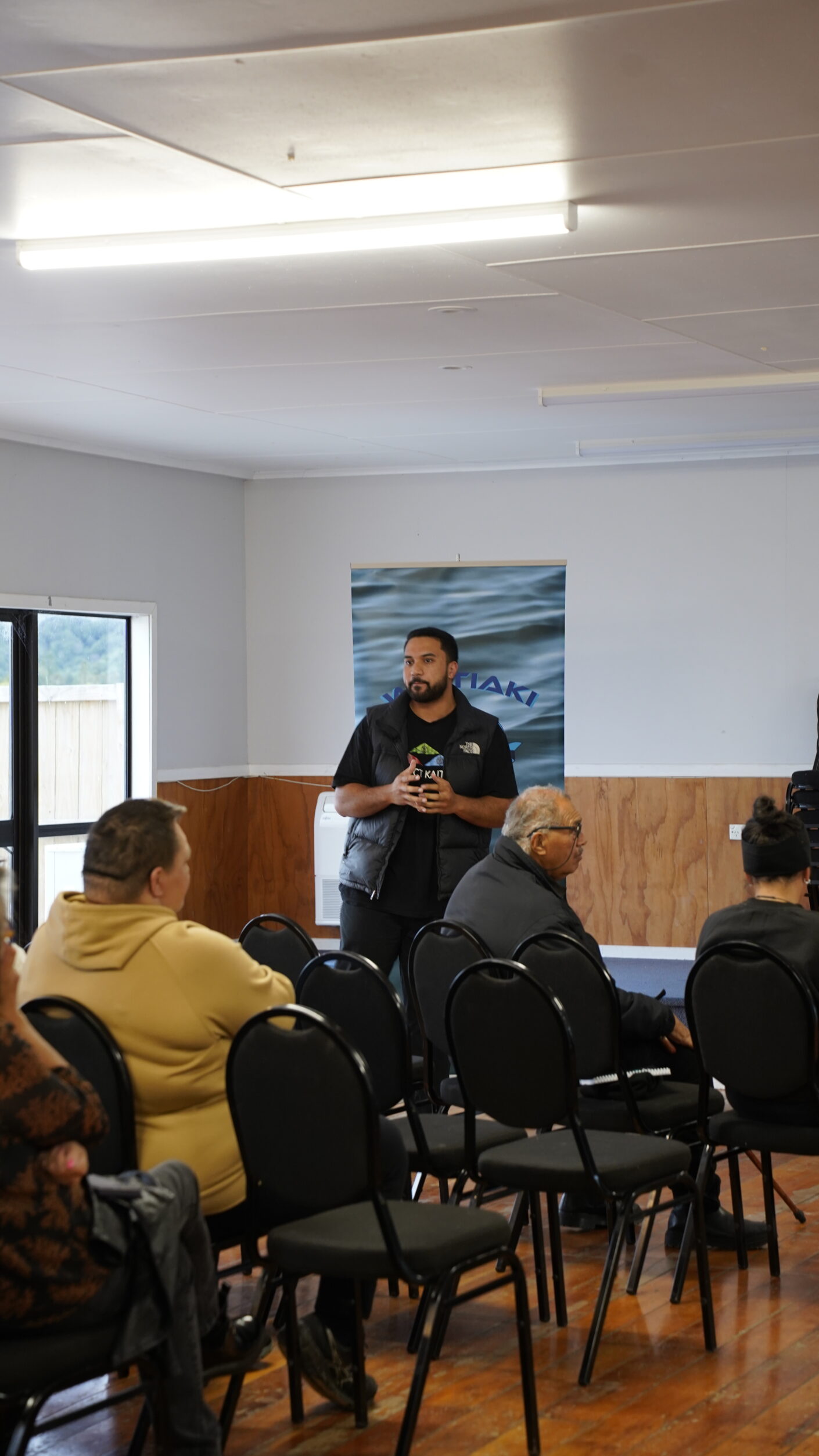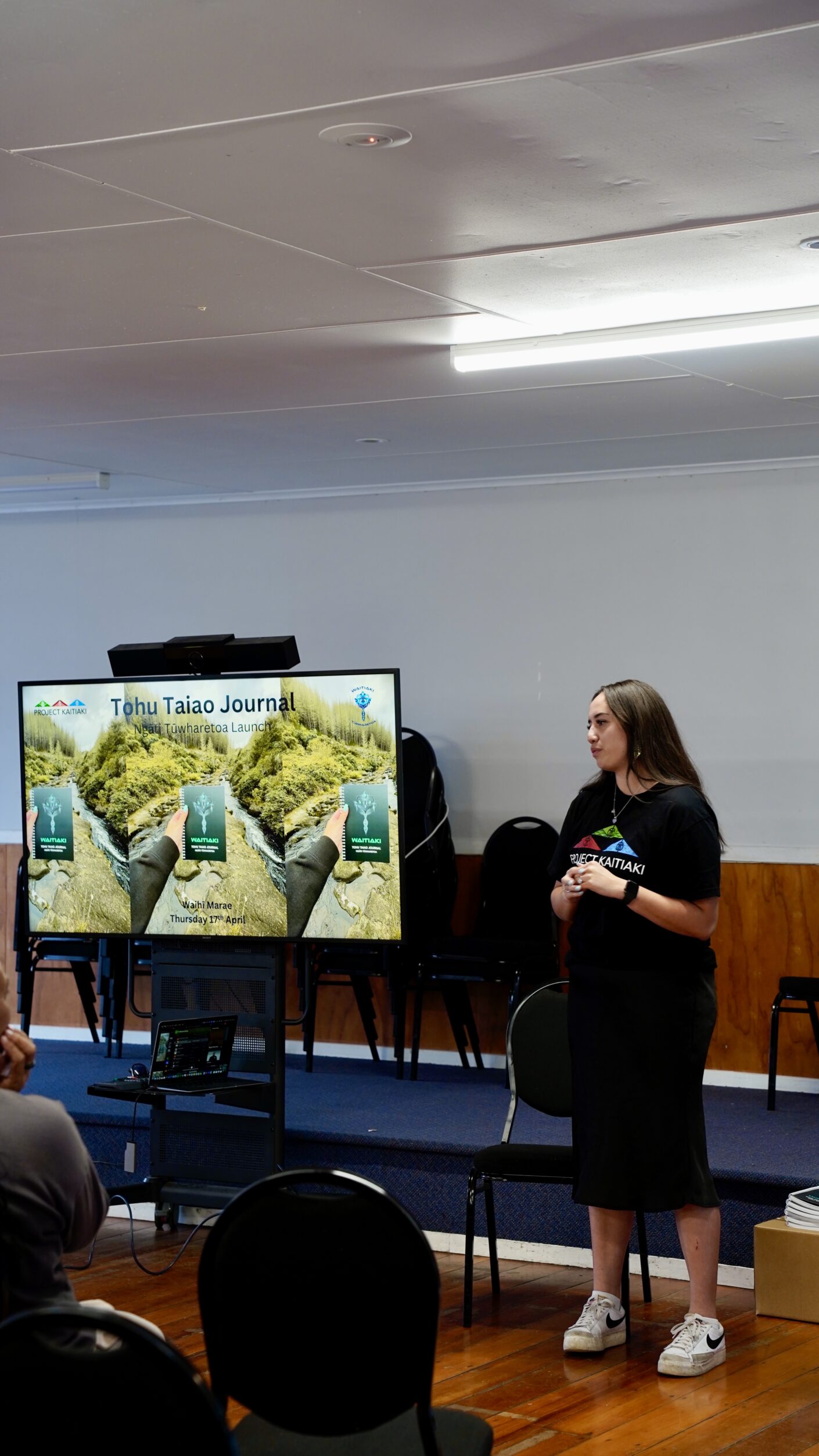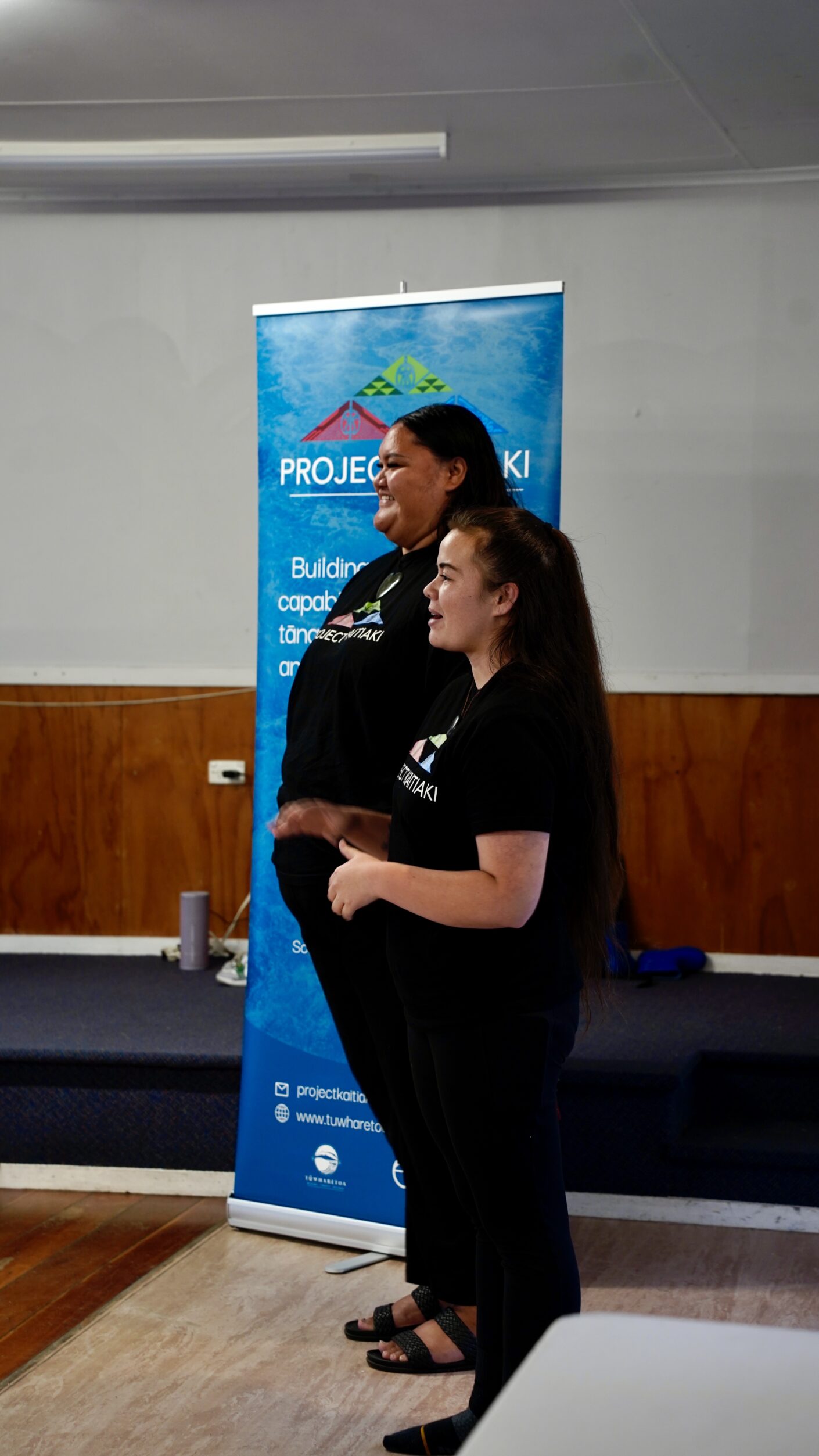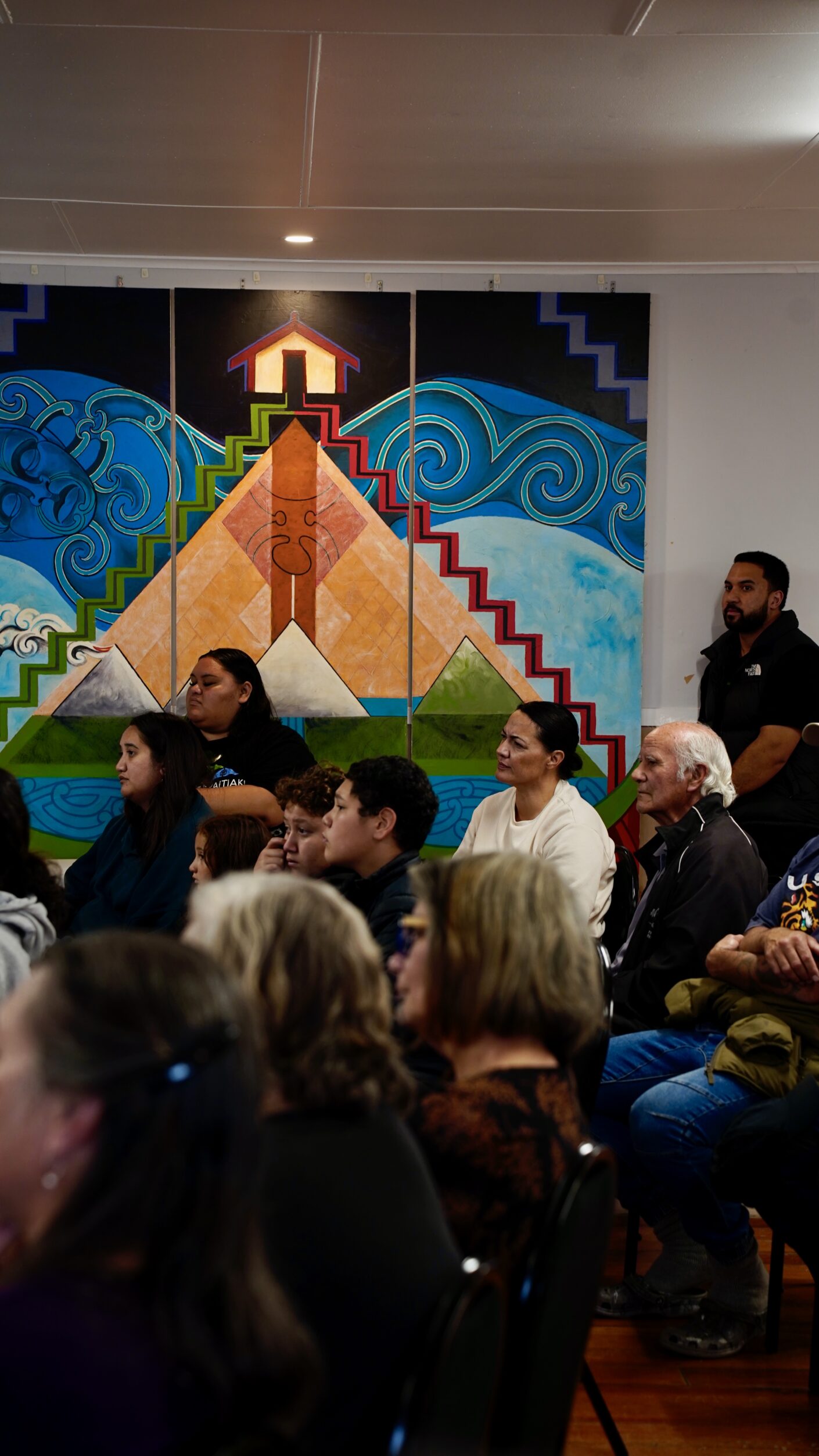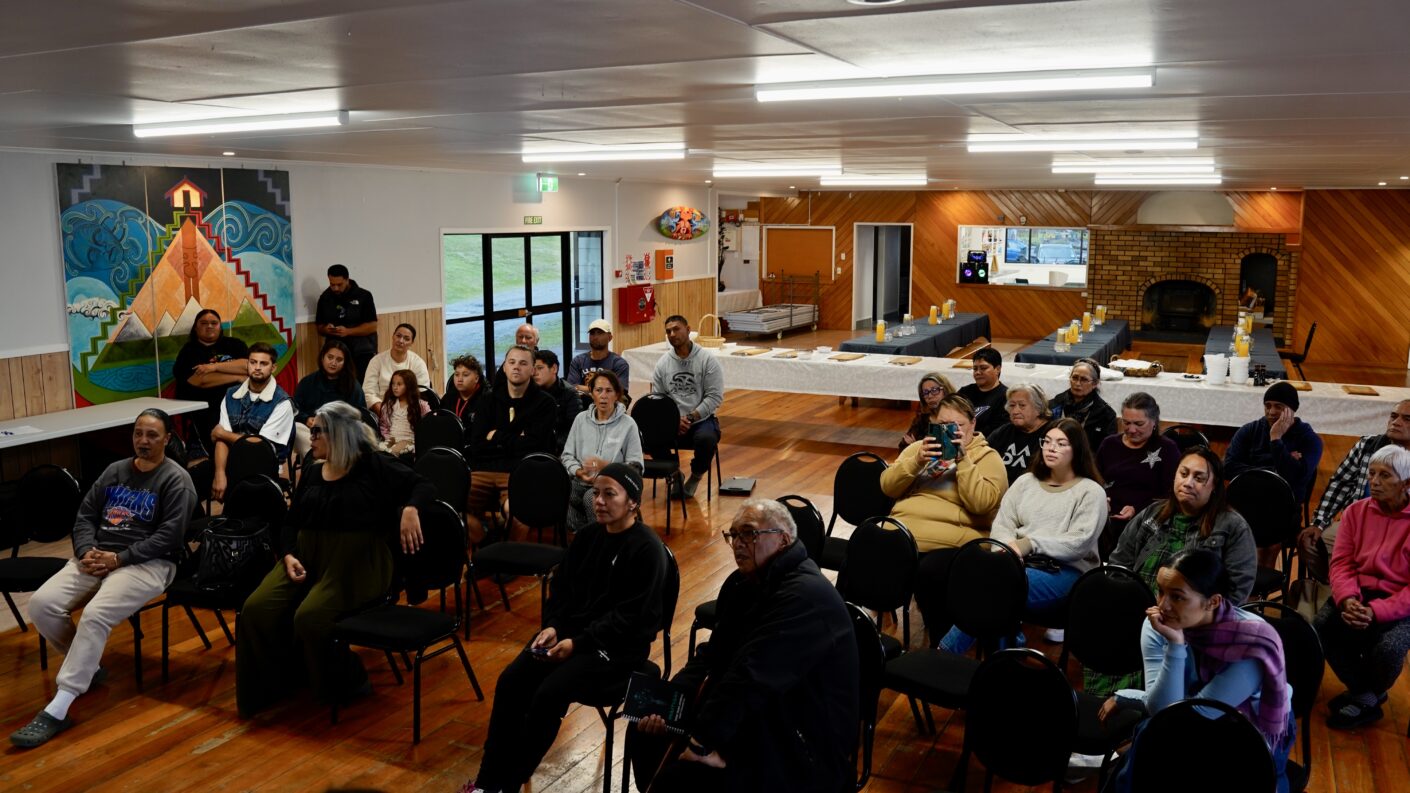Photos by Hepi Ferris-Bretherton
Last month, over 80 uri o Ngāti Tūwharetoa gathered at Nukuhau Pā and Waihī Marae to celebrate the launch of the Waitiaki Tohu Taiao Journal, a taonga born from Project Kaitiaki and created for our whānau. This hands-on, aroha-led journal blends mātauranga Māori observation with Western scientific monitoring, equipping whānau with practical tools to protect and restore our wai, whenua, and taiao.
WHY THIS MATTERS TO US
For Ngāti Tūwharetoa, our moana and awa carry our stories, our whakapapa, and our future.
But our taiao is under pressure. From pollution and climate change to the loss of biodiversity, our taiao is changing fast.
The Tohu Taiao Journal was created so our whānau can step into kaitiakitanga. It’s simple, practical, and grounded in who we are. Originally created as a year-long monitoring plan for awa, this journal has evolved to offer additional mātauranga and essential tools for observing, understanding, and protecting all realms of the taiao around you.
BORN FROM PROJECT KAITIAKI, CREATED FOR WHĀNAU
The journal was developed as part of Project Kaitiaki, a one-off Trust Board kaupapa funded through the Te Mana o Te Wai fund by the Ministry for the Environment. The purpose was to build capability and capacity in hapū to engage in decisions about wai Māori and taiao management.
From 2023 to 2025, Natalya Gibson (Environmental Coordinator – Waitiaki, Section 33) and the Project Kaitiaki team listened deeply to the voices of our whānau.
“Whānau told us, ‘We want to help, we just don’t know where to start,’” says Natalya.
“So, we created something real. Something for all ages. For anyone who wants to connect, learn, and give back to the wai and whenua that have always been there for us.”
Though Project Kaitiaki has ended, the kaupapa carries on. The journal is something we can continue using, adapting, and sharing for generations to come.
FOUR PATHWAYS TO KAITIAKITANGA
Organised by season, the journal walks whānau through four practical pathways to become active kaitiaki:
Tohu Taiao: Sensing our environment
It’s about using all our senses again:
- The way the wind smells before rain
- How the fish behave differently in raumati
- The sound of our manu
- No fancy tools needed, just you paying attention.
Tirotiro Awa: Reading the river
Get to know your stretch of our moana or awa intimately by checking:
- The banks, are they crumbling or thriving with native plants?
- The bed, what’s living (or not living) underneath those rocks?
- The water, is it clear as our alpine springs, or cloudy with trouble?
Pūtaiao: Simple science, real insights
For those who want numbers to back up what they’re seeing:
- PH test strips (no lab coat required)
- Temperature, pH, electrical conductivity, clarite and nitrate tests using SHMAK kits
- Tracking changes over time to spot problems early.
If you have pātai about accessing scientific tools, please email waitiaki@tuwharetoa.co.nz
Wānanga: From observation to action
Where the real magic happens, bringing our findings back to the marae, the kitchen table, the community:
- “Why are the kōura disappearing?”
- “How do we help native plants return?”
- “What does our awa need to thrive again?”
Karakia, waiata, and whakataukī are woven throughout the journal because monitoring isn’t just about data. It’s about remembering our relationship with our taiao and each other.
HOW YOU CAN GET INVOLVED
The journal was created for ngā uri o Ngāti Tūwharetoa; it is free and accessible to everyone, whether you live in the rohe, in town, or are visiting from afar.
Download your digital copy of the Tohu Taiao journal
For any enquiries, contact waitiaki@tuwharetoa.co.nz
THIS IS JUST THE BEGINNING
Although the Tohu Taiao Journal is the culmination of Project Kaitiaki, it is also just the beginning. The real impact happens when we take it into our homes, our awa, our moana and our ngahere, passing it on to our tamariki and mokopuna.
Kei a tātou te mana. The power is ours. The time is now.
